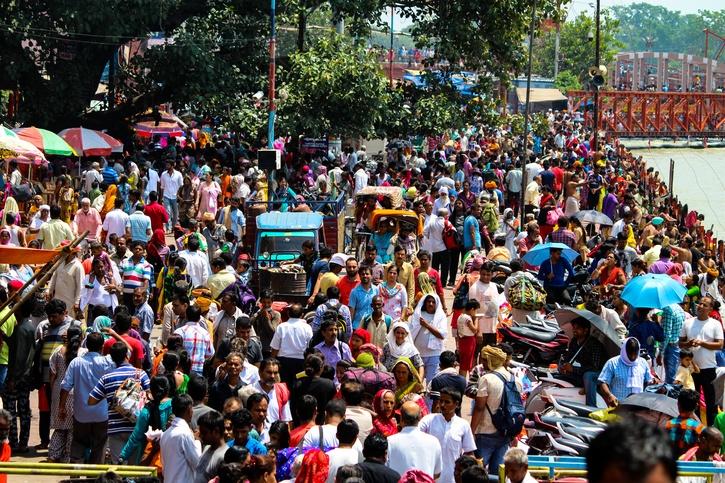Highlights
- India is anticipated to overtake China as the world’s most populated country by the end of the following year.
- In the past 12 years, a billion additional individuals have entered the world. China’s contribution will be negative as the globe adds the following billion people to its population, as per UNFPA.
- The UN said it took about 12 years for the world population to grow from 7 to 8 billion, but the next billion is expected to take about 14.5 years (2037), reflecting the slowdown in global growth.
With an increase of 177 million people, India was the major contributor as the world’s population reached 8 billion today. On the other hand, the UN expects China to contribute negatively to the following billion people on the planet.
India is anticipated to overtake China as the world’s most populated country by the end of the following year.

In a special graphic to commemorate the world population reaching eight billion people, the UN Population Fund (UNFPA) stated that Asia and Africa have been primarily responsible for this growth and are anticipated to be accountable for the next billion by 2037, while Europe’s contribution will be negative because of the declining population.
In the past 12 years, a billion additional individuals have entered the world. China’s contribution will be negative as the globe adds the following billion people to its population, as per UNFPA.

“India, the largest contributor to the 8 billion (177 million), will surpass China, which was the second largest contributor (73 million) and whose contribution to the next billion will be negative, as the world’s most populous nation by 2023,” UNFPA said.
The UN said it took about 12 years for the world population to grow from 7 to 8 billion, but the next billion is expected to take about 14.5 years (2037), reflecting the slowdown in global growth.

The world’s population is anticipated to reach 10.4 billion people in the 2080s and stay there until 2100.
For the increase from 7 to 8 billion, around 70 percent of the added population was in low-income and lower-middle-income countries.
According to the UN, these two groups of nations are anticipated to account for more than 90% of global growth when the world’s population rises from 8 to 9 billion.

Between now and 2050, the global increase in the population under age 65 will occur entirely in low-income and lower-middle-income countries since population growth in high-income and upper-middle-income countries will occur only among those aged 65 or more, it said.
The World Population Prospects 2022, released in July this year, said that India’s population stands at 1.412 billion in 2022, compared with China’s 1.426 billion.
India is projected to have a population of 1.668 billion in 2050, ahead of China’s 1.317 billion people by the middle of the century.
According to UNFPA estimates, 68 percent of India’s population will be between 15-64 years old in 2022, while people aged 65 and older will be seven percent of the population.
The world’s population could grow to around 8.5 billion in 2030 and 9.7 billion in 2050.
The report said China is expected to experience an absolute decline in its population as early as 2023.
At the report’s launch in July, Under-Secretary-General for Economic and Social Affairs Liu Zhenmin said that countries where population growth has slowed must prepare for an increasing proportion of older persons and, in more extreme cases, a decreasing population size.
“China provides a clear example. With the rapid aging of its population due to the combined effects of very low fertility and increasing life expectancy, growth of China’s total population is slowing down, a trend that is likely to continue in the coming decades,” Liu said.
The WHO pointed out that China has one of the fastest-growing aging populations in the world.
“The population of people over 60 years in China is projected to reach 28 percent by 2040 due to longer life expectancy and declining fertility rates,” the WHO said.
In China, by 2019, there were 254 million older people aged 60 and over and 176 million older people aged 65 and over.
In 2022, the two most populous regions were in Asia: Eastern and South-Eastern Asia, with 2.3 billion people (29 percent of the global population), and Central and Southern Asia, with 2.1 billion (26 percent).
China and India, with more than 1.4 billion each, accounted for most of the population in these two regions.
More than half of the projected increase in the global population up to 2050 will be concentrated in eight countries: the Democratic Republic of the Congo, Egypt, Ethiopia, India, Nigeria, Pakistan, the Philippines, and the United Republic of Tanzania.
Countries of sub-Saharan Africa are expected to contribute more than half of the increase anticipated through 2050, the report added.

